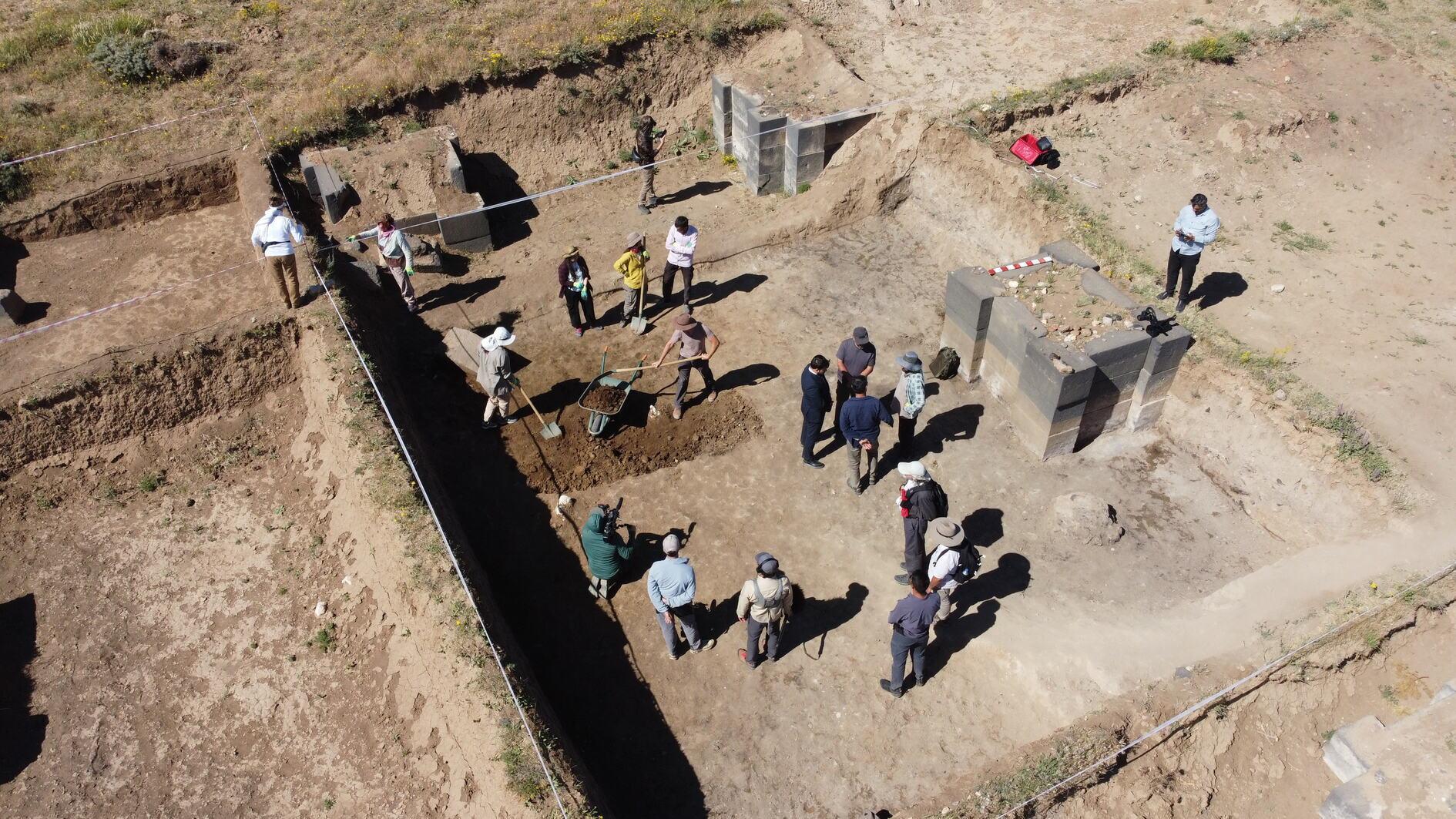
Archaeologists have unearthed 49 monumental columns known as “elephant feet” during excavations at Kef Castle, a 2,700-year-old Urartian fortress situated at the foot of Mount Süphan in the Adilcevaz district of Bitlis province.
Commissioned by Urartian King Rusa II, Kef Castle was constructed atop a hill overlooking Lake Van. Excavations are being carried out with the permission and support of the Culture and Tourism Ministry, under the scientific supervision of Associate Professor İsmail Coşkun of Van Yüzüncü Yıl University’s Department of Archaeology.
The team has focused its recent efforts on the castle’s grand hall, where feasts are believed to have taken place during the Urartian era.
Coşkun noted that kitchen remains and bone fragments support this interpretation. “So far, we’ve uncovered 49 columns — each 1.5 meters high — which we call ‘elephant feet,’” he said. “Our goal is to fully reveal the layout of the hall,” he said.
Excavations began in 2021 and have also revealed remnants of service and kitchen rooms in past seasons. Researchers previously identified traces of a pigment known as “Urartian blue” at the site.
Ömer Tanyürek from Hakkari University highlighted potential links between Urartian culture and civilizations in South America.
“We observed similarities between depictions of the Urartian deity Haldi and archaeological motifs in Peru and Bolivia,” he said. “It was moving to hear people in Peru speak about Kef Castle and Lake Van. This region could develop into a tourism hub just like Peru.”
Adilcevaz Mayor Abdullah Akbaba also emphasized the site’s historical significance and mysterious engineering feats.
“The castle’s structure includes 10- to 15-ton basalt blocks that bear no geological relation to the surrounding area. How they were transported here remains unknown, echoing the mysteries of the Egyptian pyramids,” he said. “As one of the ancient Urartian capitals, our district is revealing findings that may predate even Göbeklitepe.”